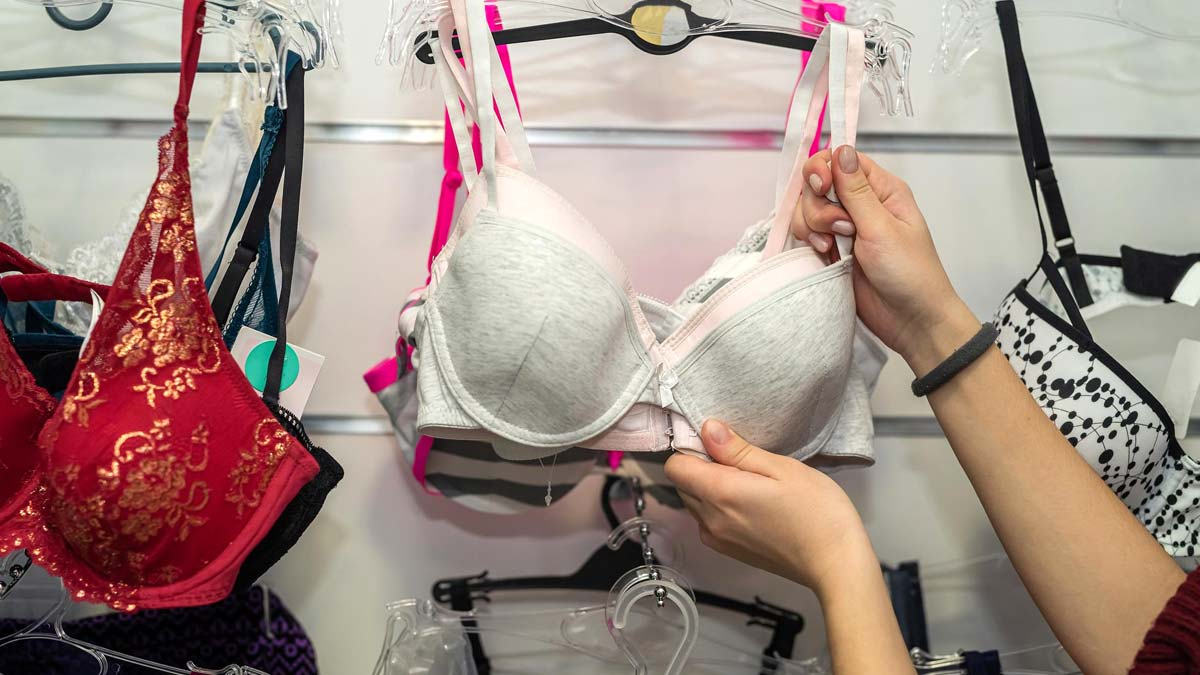
For many, the push-up bra is a staple, offering an instant boost in confidence and a desirable silhouette. Its ability to create cleavage and enhance shape makes it a popular choice for everyday wear and special occasions alike. But beyond the aesthetic appeal, a question often lingers: is wearing push-up bras all the time bad for your breasts? The answer, like most things concerning the human body, isn't a simple yes or no.
Table of Content:-
How Does A Push-Up Work?
Before delving into potential downsides, it's helpful to understand how a push-up bra works. In an exclusive interaction with the editorial team of Onlymyhealth, Dr Bhumesh Tyagi, Consultant, General Medicine and Physician at Shardacare, Health City, Noida, explained that these bras typically incorporate padding, often foam, silicone, or gel, strategically placed in the cups. This padding, combined with specific cup shapes and underwire designs, lifts the breast tissue upwards and inwards, creating the illusion of fuller, more prominent breasts and enhancing cleavage. The degree of "push" can vary significantly, from subtle enhancement to dramatic lift.
The Good: Comfort, Confidence, and Style
For many women, the push-up bra offers undeniable benefits. The immediate visual enhancement can boost self-esteem and body image, making them feel more confident in their clothing. For those with smaller breasts, it can provide a sense of proportion and balance. Furthermore, a well-fitting push-up bra can offer adequate support, reducing breast movement during activities and and potentially alleviating discomfort for some. In terms of style, they open up a wider range of clothing options, allowing for deeper necklines and more fitted silhouettes.

Also Read: Expert Reveals Why Long-term Relationships Fizzle Out
The Potential Pitfalls: Compression, Circulation, and Skin Irritation
While the occasional wear of a push-up bra is generally harmless, continuous, prolonged use can raise some concerns. One of the primary worries is compression. The constant pressure exerted on the breast tissue and surrounding lymph nodes, especially if the bra is too tight, could potentially impede proper lymphatic drainage. The lymphatic system plays a crucial role in removing waste and toxins from the body. While there's no definitive scientific evidence directly linking push-up bra compression to serious health issues like cancer, prolonged obstruction of lymphatic flow is not ideal.
Another potential issue is restricted blood circulation. A tight bra, particularly one with a constrictive band or underwire, can limit blood flow to the breast tissue. Over time, this could theoretically lead to discomfort or, in extreme cases, affect skin health.
Skin irritation and rashes are also common complaints, especially in warmer climates or with prolonged wear. The synthetic materials often used in push-up bras, combined with the constant pressure and lack of air circulation, can create a moist environment conducive to bacterial or fungal growth, leading to itching, redness, or even folliculitis. The underwire, if ill-fitting, can also dig into the skin, causing chafing and discomfort.

Also Read: Blurred Vision To Droopy Eyelids, How Your Eyes Indicate That You're Too Tired To Function
The Myth of Sagging and Breast Shape
A popular misconception is that wearing push-up bras all the time will cause your breasts to sag or permanently alter their shape. While breasts naturally lose some elasticity over time due to gravity, age, and hormonal changes, there's no scientific basis to suggest that push-up bras accelerate this process or cause permanent deformation. The temporary "lift" provided by the bra reverts once it's removed. Breast shape is primarily determined by genetics, weight fluctuations, and natural aging.
Finding the Right Fit and Moderation
Ultimately, the key to avoiding potential downsides lies in proper fit and moderation. An ill-fitting bra, regardless of its type, is more likely to cause problems. Ensure the band is snug but not constricting, the cups fully encapsulate your breasts without spilling over, and the underwire lies flat against your ribcage.
Consider reserving your push-up bras for specific outfits or occasions. For everyday wear, especially for extended periods, opt for comfortable, well-fitting bras that offer good support without excessive compression. Allowing your breasts to "breathe" and move naturally can contribute to their overall health and comfort.
Bottomline
While push-up bras offer undeniable aesthetic advantages, constant wear of an ill-fitting one can potentially lead to discomfort, skin irritation, and theoretically, impact lymphatic and blood circulation. By prioritizing proper fit and practicing moderation, you can enjoy the benefits of a push-up bra without compromising your breast health.
Also watch this video
Read Next
Fibroids On The Rise: Expert Explains The Alarming Increase Of Fibroids Among Young Indian Women
How we keep this article up to date:
We work with experts and keep a close eye on the latest in health and wellness. Whenever there is a new research or helpful information, we update our articles with accurate and useful advice.
Current Version